There are currently 35 recognized species of wild dogs, all of which belong to the Canidae family, the same family that encompasses modern dog breeds. Canids, or canines, are the members of this family and may be commonly referred to as ‘canines.’
The world’s wild dogs include species such as wolves, foxes, and jackals.
Some well-known examples of wild dog species include gray wolves, coyotes, red foxes, Arctic foxes, kit foxes, African wild dogs, and golden jackals.
It is worth noting that while some authorities classify the domestic dog as a distinct species, others classify it as a subspecies of the gray wolf.
- Subspecies are different variations of the same species. They may exhibit minor physical or behavioral differences and are often found in different geographical areas. Despite these variations, individuals from different subspecies can still interbreed and produce offspring.

The Carnivora order encompasses various animal families, including Canidae, which consists of dogs. Other families within this order include Felidae (cats), Ursidae (bears), and Otariidae, Phocidae, and Odobenidae (seals). To explore more about mammalian categorization, refer to the “Types of Mammals” section on this page.
While dogs are not native to Australia, dingoes were introduced around 3,500 years ago. Wild canines can now be found on every continent except Antarctica.
Habitat destruction and human intervention have caused the endangerment of several wild dog species.
The list of dog species below was created using the Catalogue of Life, ITIS, and the IUCN. Information regarding conservation status was sourced from the IUCN Red List.
Notable dog subspecies, including the domesticated dog, as well as certain species like the dingo and red wolf, are recognized by some authorities but not universally accepted.
You can click on any of the wild dog types listed below to access more detailed information further down the page.
Alternatively, continue scrolling to explore all the different types of wild dogs!
It is important to note that the number of surviving dog species may change in the future as research on dog categorization is ongoing. Animals currently classified as subspecies might be reclassified as distinct species (and vice versa) in the future.
For a comprehensive list of wild dog species, along with pictures and information about each, please refer to the provided resource.
Alphabetical Wild Dogs Species List With Pictures
African Golden Wolf

- Scientifically known as Canis anthus or Canis Lupaster, the African golden wolf is primarily found in Africa. It holds a conservation status of “Least Concern.”
The African golden wolf inhabits regions of North and northeast Africa, including countries such as Egypt, Algeria, and Ethiopia.
This small dog species weighs between 7 to 15 kg (15 to 33 lb) and stands at a height of around 40 cm (16 inches). This makes it roughly half the weight and twice the height of a typical Labrador. Adapted to desert environments, the African golden wolf can thrive in arid climates with limited water resources.
The coat color of the African golden wolf can vary, ranging from silver-grey to light sandy-brown. Previously, it was believed to be closely related to the Golden Jackal. However, recent scientific research has identified enough distinctions between the two species to classify the African golden wolf as a distinct species.
African Wild Dog
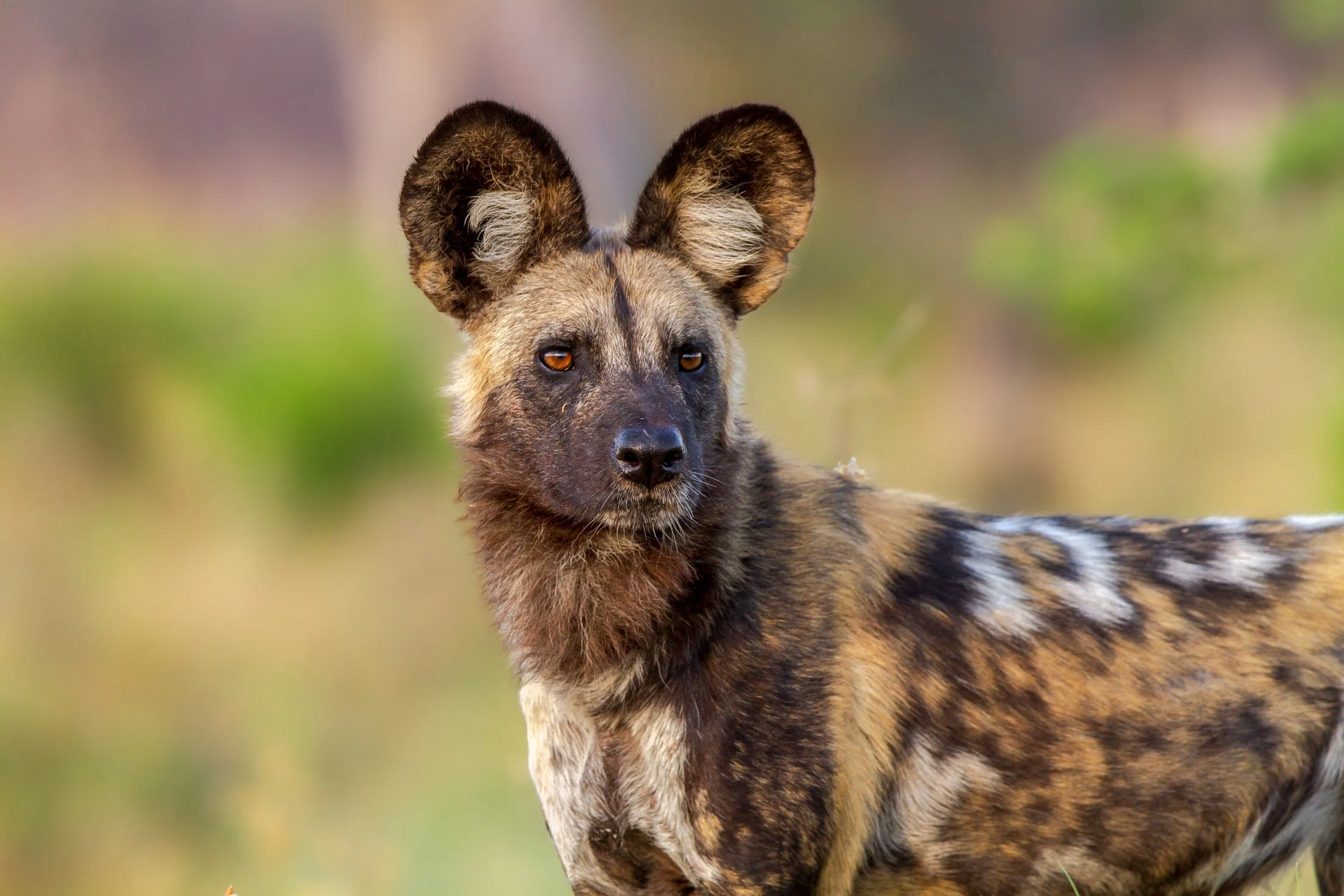
- Also known as the African hunting dog or African painted dog, the scientific name for this species is Lycaon pictus. It is primarily found in various regions of Africa. Unfortunately, the African wild dog is classified as “Endangered” according to its conservation status.
These vibrant and brightly colored wild dogs can be observed in small groups across their habitat in Africa. These groups consist of an alpha male, a female, and their offspring, making them the most common members. Working together as a pack, they collaborate to track down their prey, often targeting medium-sized antelopes.
The African wild dog’s distinctive coat patterns are responsible for its alternative name, the African Painted Dog. With a weight of up to 30 kg (66 lb) and a shoulder height of 75 cm (30 in), it is a relatively large animal.
The IUCN Red List, a reputable source, has designated the African wild dog as Endangered. Current estimates suggest that there are fewer than 1,500 mature individuals remaining in the wild. The population of this species is scattered across a wide range of territories within Africa.
Arctic Fox

- The scientific name of the Arctic fox is Vulpes lagopus. It can be found in the Arctic regions of North America, Europe, and Asia. Currently, its conservation status is categorized as “Least Concern.”
Belonging to the genus Vulpes, which encompasses various fox species, the Arctic fox is recognized as one of the “true foxes.”
This small canid possesses several adaptations that enable it to thrive in the harsh conditions of the northern regions. Its thick coat provides excellent insulation and undergoes seasonal color changes, turning white in winter and brown in summer. Remarkably, the Arctic fox is the only member of the dog family with hairy foot pads.
In terms of size, an adult male Arctic fox stands at around 30 cm (11.8 in) tall at the shoulder and weighs approximately 9.4 kg (20.7 lb). This makes it roughly half the size of a Labrador dog.
Bat-Eared Fox
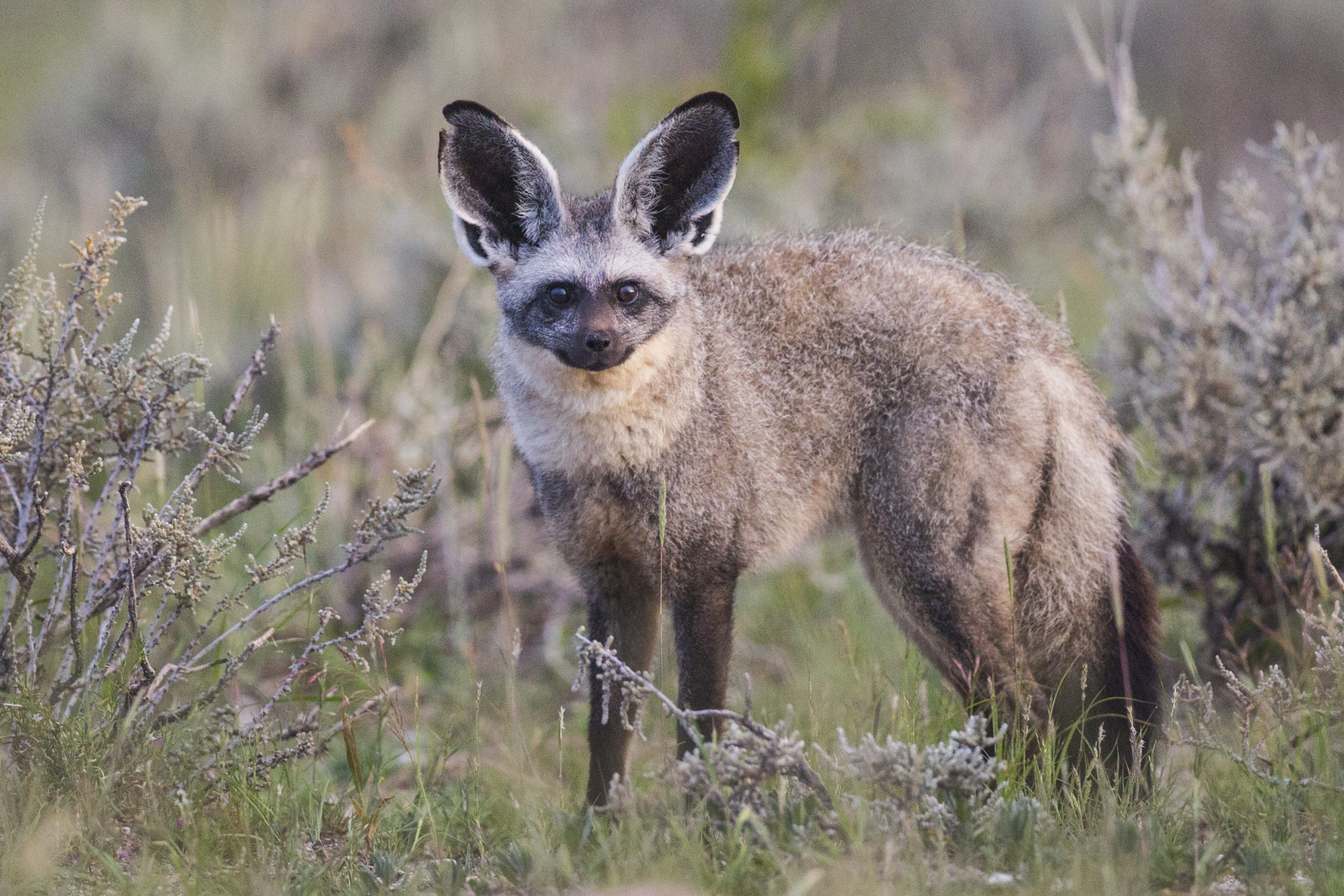
- The bat-eared fox, also known as Delalande’s fox or long-eared fox, is a canid species found in Africa. It primarily inhabits arid grassland environments. The distinctive feature of this fox is its large ears, which give it its name. These prominent ears play a crucial role in the fox’s feeding habits as they aid in detecting termites, which make up a significant portion of its diet. In fact, termites can account for up to 80% of the bat-eared fox’s food intake.
Due to its insectivorous lifestyle, the bat-eared fox has evolved small teeth and jaws that are capable of opening and closing up to five times per second. This rapid movement facilitates efficient consumption of its preferred prey.
There are two distinct populations of bat-eared foxes in Africa—one in Southern Africa and another in eastern Africa. Despite the challenges they face, the bat-eared foxes currently hold a conservation status of “Least Concern.”
Bengal Fox

- The Bengal Fox, also known as the Indian fox, is a small wild dog species found exclusively on the Indian subcontinent in Asia. It possesses the typical bushy tail observed in true foxes and displays a pale-colored coat. What sets it apart is its distinct black-tipped tail, distinguishing it from other species within its genus. The Bengal Fox has a combined head and body length of at least half its tail length. On average, individuals of this species weigh between 2.3 to 4.1 kg (5 to 9 pounds).
The Asian habitat of the Bengal Fox primarily consists of dry grasslands, with a tendency to avoid deep forests and desert regions. These social animals construct large underground dens for nesting purposes.
Despite facing a decline in population due to habitat destruction, the Bengal Fox is currently listed as “Least Concern” by the IUCN. This designation signifies that, although it faces threats, its overall conservation status is not of immediate concern.
Black-Backed Jackal

- Scientifically known as Lupulella mesomelas (formerly Canis mesomelas), the black-backed jackal is primarily found in various regions of Africa. Currently, its conservation status is categorized as “Least Concern.”
This canid species is easily distinguished by its thick black fur on the back, setting it apart from other canids within the dog family. Its sides and underside, on the other hand, display a lighter sandy-red coloration. The black-backed jackal features long ears and a pointed nose.
Previously, the black-backed jackal, along with the gray wolf and other similar wolf-like canids, was classified under the genus Canis. However, genetic research based on mitochondrial DNA has revealed that the other wolf-like canids diverged from the black-backed jackal and its closely related counterpart, the side-striped jackal, millions of years ago. As a result, African jackals are now classified under a distinct genus known as Lupulella. It’s important to note that the golden jackal found in Eurasia is not closely related to them and remains classified under Canis.
The black-backed jackal is commonly found in deserts and savannas but can adapt to various environments.
Interestingly, like the bat-eared fox, the black-backed jackal is found in two different regions of Africa. The Cape black-backed jackal (Lupulella mesomelas mesomelas) is found in Southern Africa, while the East African black-backed jackal (Lupulella mesomelas schmidti) resides in East Africa. It is estimated that these two populations diverged around 1.4 million years ago.
Blanford’s Fox

- The Blanford’s fox, also known as the Afghan fox or royal fox, is a wild dog species found in the Middle East and Central Asia. It inhabits desert regions as well as mountainous areas. The species is named after William Thomas Blanford, an English naturalist renowned for his research on Indian fauna.
Weighing an average of 0.9 to 1.5 kg (2 to 3.3 lb), this small fox possesses a long and bushy tail that serves as a balancing mechanism while climbing. Its large ears play a crucial role in helping it stay cool in the scorching heat of the desert. One distinctive feature of the Blanford’s fox is the presence of two distinct black stripes on its face, which aids in its identification.
The Blanford’s fox is an adept climber, utilizing its tail and keen sense of balance to navigate its environment. Despite its small size, it has adapted well to survive in arid habitats. Currently, the conservation status of the Blanford’s fox is categorized as “Least Concern,” indicating that its population is relatively stable and not at immediate risk.
Bush Dog

- The bush dog, scientifically known as Speothos venaticus, is a unique canid species found in South America. It inhabits diverse environments such as rainforests and savannas, particularly near water sources. One distinctive feature of the bush dog is its partially webbed toes, which enable it to swim efficiently.
This South American canid has a distinct appearance, resembling a badger-like creature. It possesses a long and squat body, short legs, and a short tail.
Unfortunately, the bush dog is classified as “Near Threatened” due to various factors. Habitat destruction poses a significant threat to its population, as their natural habitats are being fragmented or destroyed. Additionally, the separation of populations and a decline in prey species further contribute to their vulnerable conservation status.
Conservation efforts are essential to protect the bush dog and mitigate the threats it faces.
Cape Fox

- The Cape fox, also known as asse, cama fox, or silver-backed fox, is a distinct canid species found in Southern Africa. It is the sole representative of the genus Vulpes in Africa.
This African canid stands out with its grey-brown coat, pale yellow underbelly, and a distinctive long, bushy tail with a black tip. It typically measures up to 33 cm (13 in) at the shoulder and weighs between 3.6 and 5 kg (8 and 11 lb).
The Cape fox primarily inhabits grasslands and semi-desert scrub environments. It can be found in countries such as Angola, Botswana, Namibia, and South Africa. The species has a wide distribution and is classified as “Least Concern” by the IUCN, indicating that its population is relatively stable and not of immediate conservation concern.
Corsac Fox

- The corsac fox, also referred to as the steppe fox, is a distinct species found in the grasslands of Central Asia. It falls within the scientific classification of Vulpes corsac.
Weighing between 1.6 and 3.2 kg (3.5 and 7.1 lb), the corsac fox is considered a mid-sized fox. Its presence is notable in the steppes, characterized by vast treeless grasslands. During the winter season, the corsac fox’s coat thickens, adapting to the cold weather, and may lose its dark coloration.
Despite being targeted for its fur and facing hunting pressure, the corsac fox remains abundant and common throughout its range. Its conservation status is classified as “Least Concern,” signifying that its population is relatively stable and not of immediate concern. Conservation efforts continue to be crucial in ensuring the long-term survival and well-being of this fascinating Central Asian species.
Coyote
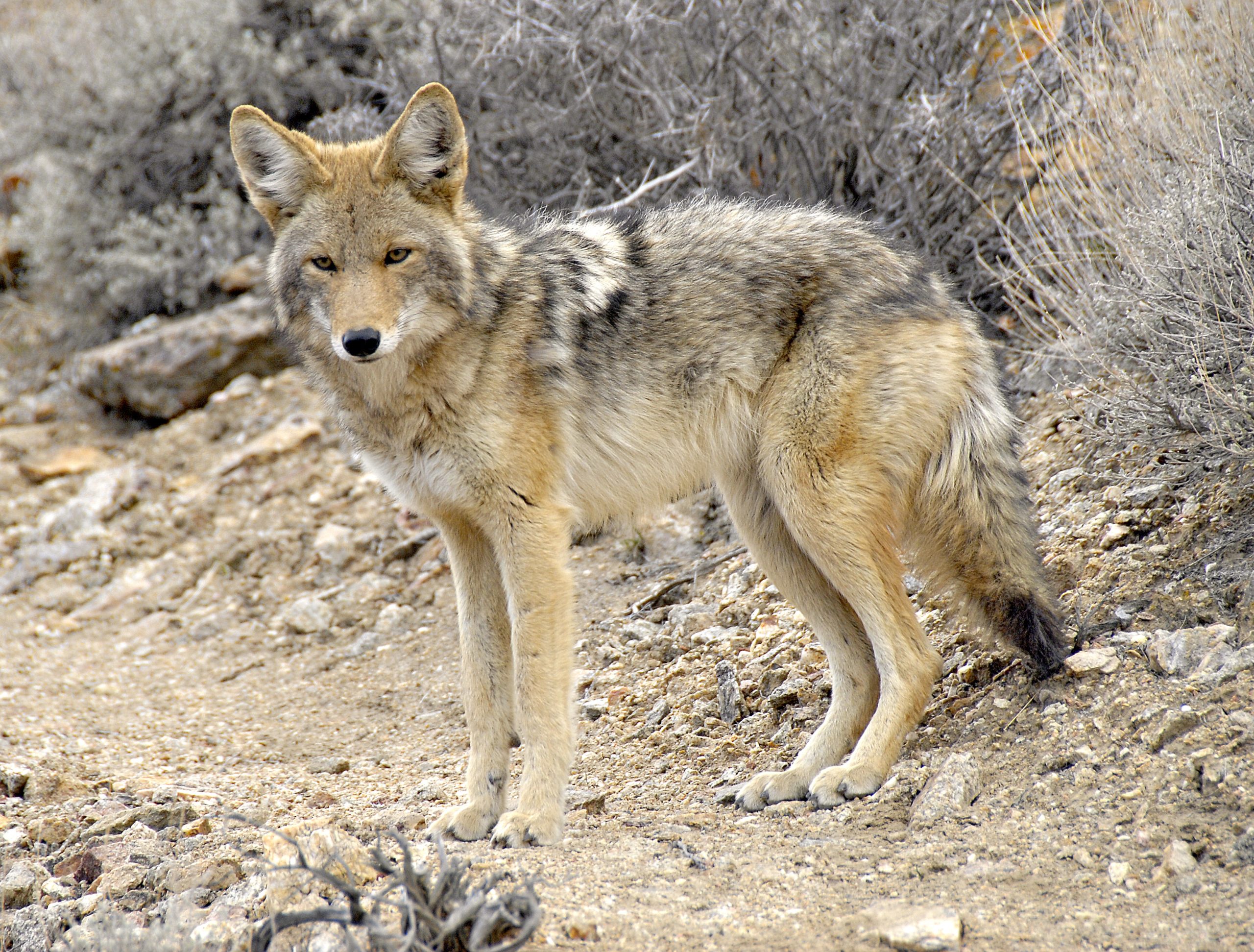
- The coyote, also known as the prairie wolf, is a versatile canid species that inhabits various regions of North America. From vast prairies to dense forests, this adaptable member of the dog family can thrive in diverse environments. Unlike its close relative, the grey wolf, the coyote is known to reside near human settlements.
One intriguing aspect of the coyote is its ability to hybridize with wolves, leading to the emergence of hybrid offspring known as ‘coywolves.’ This unique characteristic highlights the genetic flexibility and adaptability of the coyote species.
Despite facing some challenges and conflicts with human activities, the coyote population is currently classified as “Least Concern” in terms of conservation status. This indicates that the species’ population is relatively stable and not at immediate risk. The presence of coyotes across North and Central America contributes to the ecological diversity and balance of these regions.
Crab-Eating Fox

- The crab-eating fox, also known as the forest fox, wood fox, bushdog, or maikong, is a prevalent canid species found in South America. It is well adapted to various habitats, including marshlands, savannas, and forests. This fox species has a distinctive appearance with small, dark grey fur and short limbs. When feeling nervous, it raises its tail as a sign of alertness. In terms of size, the crab-eating fox is notably smaller than a medium-sized domestic dog, weighing between 4.5 and 7.7 kg (10 and 17 lb).
During the day, the crab-eating fox seeks shelter in subterranean dens, emerging at dusk to engage in its hunting activities. One notable behavior of this species is its skill in crab hunting, particularly in muddy areas near floodplains. However, the diet of the crab-eating fox is not limited to crabs alone; it also consumes other animals and plant matter.
Interestingly, indigenous communities have been known to keep the crab-eating fox as a pet, showcasing a long-standing connection between humans and this remarkable South American canid.
Culpeo

- The culpeo, also known as zorro culpeo, Andean zorro, or Andean fox, is a notable canid species found in South America. It holds the distinction of being the continent’s second-largest dog species, following the maned wolf. The culpeo belongs to the Lycalopex genus, which encompasses various South American foxes, also known as zorros in Spanish, and related animals.
With its striking appearance, the culpeo possesses grey-red or yellow fur and a distinctive bushy tail. It is slightly smaller than a coyote in size. The range of the culpeo spans from southern Colombia to southern Chile, allowing it to inhabit diverse environments throughout South America. However, it is most commonly encountered on the western slopes of the Andes mountain range.
Despite certain localized threats and habitat alterations, the culpeo is currently classified as “Least Concern” in terms of conservation status. This indicates that the species’ population is relatively stable and not of immediate concern. The presence of the culpeo in South America adds to the unique ecological diversity and natural heritage of the continent.
Darwin’s Fox

- Darwin’s Fox, also known as Darwin’s zorro, is a remarkable canid species discovered by the renowned English naturalist Charles Darwin. This elusive fox can only be found in specific locations in Chile, including Nahuelbuta National Park, the Valdivian Coastal Range, and the Island of Chiloé. It prefers to inhabit wooded areas and is a rare sight in the wild.
In terms of size, Darwin’s Fox is one of the smallest members of the dog family, weighing less than 4 kg (8.8 lb) at maximum. This makes it around one-tenth the weight of a large German shepherd. Despite its small stature, this fox species plays a significant role in the ecosystem.
Unfortunately, Darwin’s Fox is facing numerous threats to its survival. The presence of domesticated dogs poses the greatest danger, as they can harm or kill the wild species and potentially transmit diseases. As a result, Darwin’s Fox is currently listed as “Endangered,” highlighting the urgent need for conservation efforts to protect this unique and vulnerable canid species.
Dhole

- The Dhole, also known as the Asian wild dog, is a remarkable canid species found in various regions of Asia, including Central, South, and Southeast Asia. This species can thrive in a range of habitats, including rainforests and grasslands.
In terms of size, the Dhole is a large member of the dog family, weighing up to 40 kg (88 lb), nearly twice the weight of a coyote. It features reddish fur resembling that of a fox, along with a bushy tail. Its appearance is reminiscent of members of the Canis genus, which includes domestic dogs.
Dholes are highly social animals that live in packs of approximately twelve individuals, but they can grow even larger, reaching thirty or forty members. Their cooperative nature is essential for their survival and success as hunters.
Interestingly, the range of the Dhole overlaps with that of big felids such as tigers and leopards. While individual encounters between a Dhole and a large cat may not end well for the Dhole, a pack of Dholes working together can overpower and even kill a solitary tiger or leopard.
Sadly, the Dhole population is in a critical state due to habitat destruction. As their natural habitats are being fragmented or destroyed, the survival of this species is at risk, emphasizing the urgent need for conservation efforts to protect the Dhole from extinction.
Ethiopian Wolf

- The Ethiopian Wolf, also known as the Abyssinian Wolf, Simien Fox, or Simien Jackal, is a unique canid species endemic to the highlands of Ethiopia. Its diet primarily consists of rats, which it hunts throughout the day.
Weighing an average of 16 kg (35 lb), the Ethiopian Wolf falls into the medium-sized category among canids. It has a distinct crimson-brown coat and a white chest, giving it a striking appearance.
Tragically, the Ethiopian Wolf holds the title of being the world’s most endangered canid species, with less than 200 mature individuals remaining in the wild. This critically endangered status is primarily attributed to habitat destruction caused by human development in the region.
Conservation efforts are crucial to safeguard the Ethiopian Wolf and prevent its extinction. Preserving its natural habitat and implementing conservation measures are necessary steps to ensure the survival of this unique and threatened canid species.
Fennec Fox
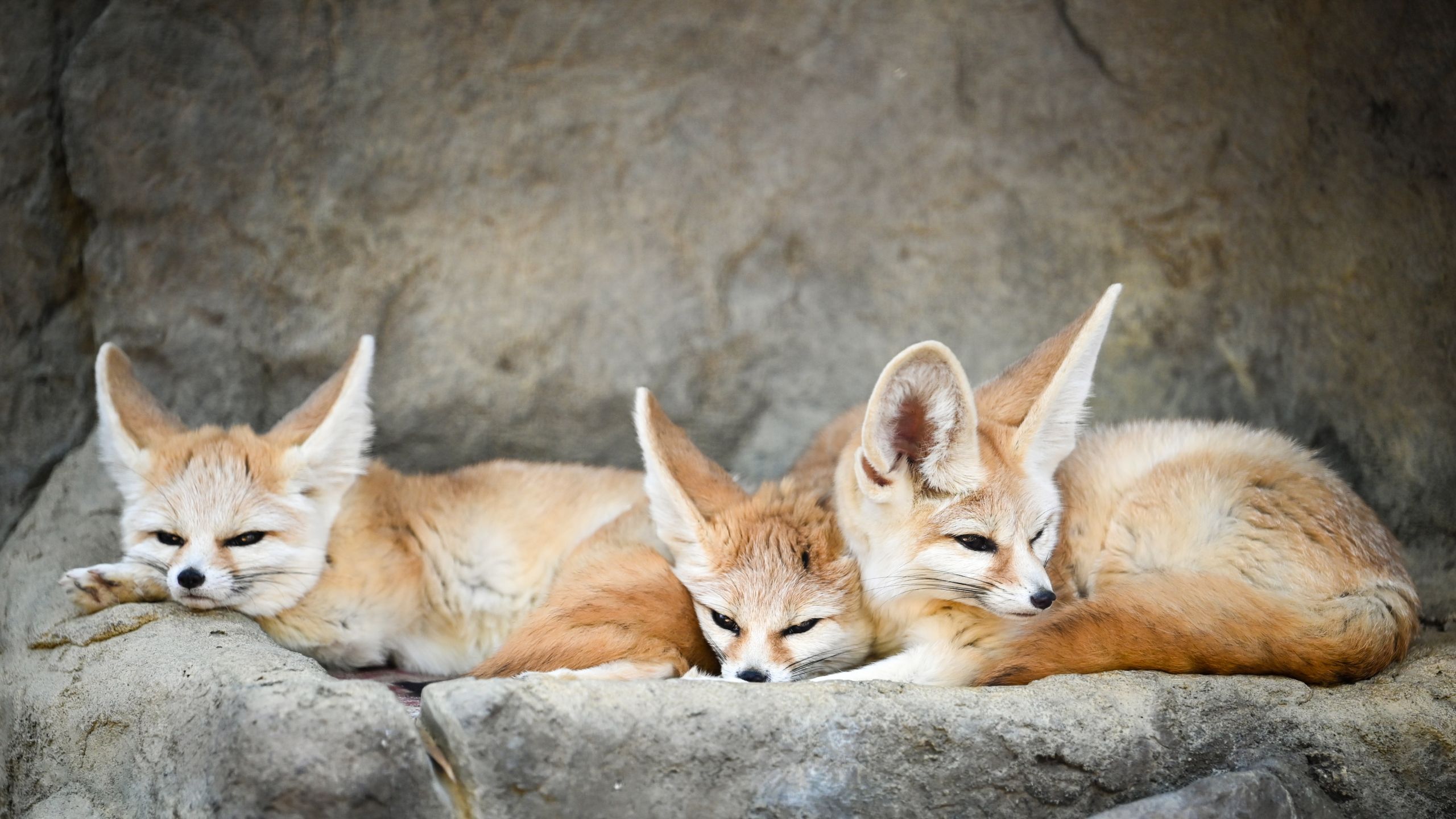
- The fennec fox, scientifically known as Vulpes zerda, holds the title of the smallest member of the dog family. With a weight ranging between 1 and 1.9 kg (2.2 and 4.2 lb), it is truly petite.
This fascinating African wild dog thrives in the hot and arid regions of North Africa, including the vast expanse of the Sahara Desert. Its pale and orange-white coat serves as a reflective shield against the scorching heat, while the thick fur on the bottom of its paws enables it to walk comfortably on the hot sand. These adaptations are essential for its survival in such an inhospitable environment.
The fennec fox’s most distinctive feature is its remarkably large ears. These ears serve two important purposes. Firstly, they aid in dissipating heat, helping to keep the fox cool under the intense desert sun. Secondly, their exceptional sensitivity allows the fox to detect the movements of small prey animals scurrying about underground. This keen sense of hearing gives the fennec fox a distinct advantage in locating and capturing its food sources.
While the fennec fox is currently categorized as “Least Concern” in terms of conservation status, continued efforts are necessary to protect its natural habitat and address potential threats to its population.
Golden Jackal

- The Golden Jackal, scientifically known as Canis aureus, distinguishes itself from the African jackal species, such as the black-backed jackal and side-striped jackal, by its closer resemblance to a small wolf. Despite its name, it is not directly related to the African golden wolf.
The Golden Jackal exhibits a wide distribution across regions spanning from Eastern Europe to the Middle East, and extending all the way to Asia and Vietnam. This adaptable canid has proven its ability to thrive in various environments, including woodlands and meadows. It demonstrates remarkable versatility in its diet, being able to feed on natural prey as well as scavenge for food sources, including human waste.
Unlike some other species facing conservation challenges, the Golden Jackal population is showing positive growth trends. Currently, it is listed as “Least Concern” in terms of its conservation status. However, ongoing monitoring and conservation efforts are still necessary to ensure the continued well-being of this remarkable canid across its range.
Gray Fox

- The gray fox, scientifically known as Urocyon cinereoargenteus, inhabits a wide range spanning from southern Canada to northern South America. It is particularly abundant in the Pacific states of North America and can be found throughout the United States. One of its distinctive features is the gray/silver fur on its back, which is a mixture of gray, black, and light orange hues. A notable characteristic of the gray fox is the black line that runs through the center of its tail.
This adaptable canid species thrives in diverse environments such as woodlands, scrublands, and rocky areas. What sets the gray fox apart from other canids is its remarkable climbing ability. It is the only native canid in North America that can climb trees, making it a unique member of the canine family.
Gray Wolf

- The gray wolf, scientifically known as Canis lupus and also referred to as the timber wolf, is the largest wild canine species. It has a widespread distribution across North America, Europe, and Asia, making it one of the most widely-distributed land mammals. However, due to human expansion, the wolf’s range has become more limited and it now primarily inhabits remote wilderness areas, away from human settlements.
The appearance of the gray wolf can vary depending on its geographical location. On average, a wolf can weigh up to 54 kg (120 pounds) and stand up to 85 cm (33.5 inches) tall, although larger individuals have been documented. European wolves tend to be larger than their North American counterparts.
Wolves are highly social animals that live in packs, which are family groups. They engage in cooperative hunting, pursuing prey alone, in pairs, or in coordinated groups. Their diet is diverse and includes animals such as moose, muskoxen, smaller mammals, and birds.
The gray wolf holds a significant place in mythology and folklore, with its haunting howl being one of nature’s most evocative sounds.
There are 38 recognized subspecies of wolves, including Eurasian wolves, eastern wolves, and Arctic wolves. Some authorities classify the red wolf, dingo, and domestic dog as distinct species, while others consider them as subspecies of the gray wolf.
Hoary Fox
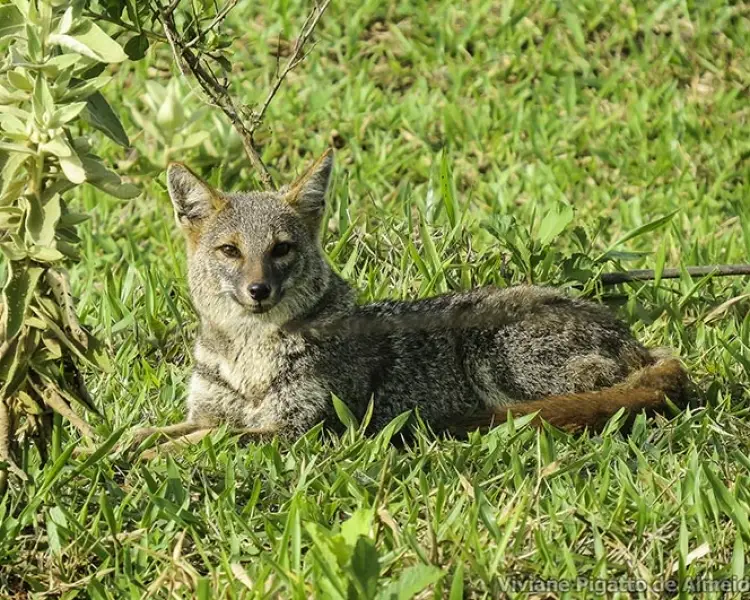
- Also known as the Hoary Zorro, the Hoary Fox is a small fox species found exclusively in Brazil. Its preferred habitat is the vast Cerrado savannas, which are located in central Brazil.
As a nocturnal hunter, the Hoary Fox primarily feeds on insects, making them its main source of food. However, it also preys on small animals like rats and birds. The species plays an important ecological role within its ecosystem.
Island Fox

- The Island Fox, scientifically known as Urocyon littoralis, is a small fox species found on six of the eight Channel Islands off the coast of California, USA. It is believed to have evolved from the mainland gray fox.
One interesting characteristic of the Island Fox is its small size, which is a result of insular dwarfism. This phenomenon occurs when species living in limited areas, such as islands, adapt to their environment by becoming significantly smaller than their mainland counterparts.
In the 1990s, the Island Fox faced a critical decline in population, leading it to be classified as Critically Endangered. However, thanks to various conservation efforts and programs, the species has shown signs of recovery, and its population has been gradually increasing. The Island Fox serves as a reminder of the importance of preserving and protecting unique island ecosystems.
Kit Fox

-
The kit fox, scientifically known as Vulpes macrotis, is a small canid species found in North America, specifically in dry and desert regions of the United States and Mexico. One distinguishing feature of the kit fox is its large ears, which serve multiple purposes. These enormous ears help the fox in surviving the harsh desert environment by aiding in the dissipation of body heat and providing exceptional hearing abilities. The kit fox has adapted to its arid habitat and has managed to maintain a stable population, leading to its classification as “Least Concern” in terms of conservation status
Maned Wolf

- The maned wolf, known by its scientific name Chrysocyon brachyurus, is the largest canid species found in South America. It is a unique and striking member of the dog family. This majestic creature can be found in the grasslands and open woodlands of Argentina, Bolivia, Brazil, Paraguay, and Peru.
The maned wolf is characterized by its long legs, shaggy mane, and beautiful reddish-brown coat. Standing at an impressive shoulder height of around 90 cm (35 in), it is taller than the gray wolf, yet it has a relatively lighter build with an average weight of 23 kg (51 lb).
Although the maned wolf is not currently considered endangered, it is listed as “Near Threatened” due to ongoing habitat loss and fragmentation. Conservation efforts are crucial to ensure the continued survival and protection of this magnificent species in South America.
Pale Fox

-
The pale fox, scientifically known as Vulpes pallida, is a small wild dog species found in the dry sandy and rocky regions south of the Sahara Desert in Africa. Its name perfectly describes its appearance, with a pale and sandy-colored coat that blends in with its arid surroundings. Like other canids adapted to desert life, the pale fox has large ears that help regulate body temperature and enhance hearing.
Being a nocturnal creature, the pale fox is most active during the night. During the day, it seeks refuge in burrows it has dug, using them as resting places. When darkness falls, the pale fox emerges to hunt for its food, which consists of a variety of small creatures and insects that inhabit its arid habitat.
Currently, the pale fox is listed as “Least Concern” in terms of conservation status, indicating that its population is relatively stable and not at immediate risk. However, ongoing monitoring and conservation efforts are essential to ensure the long-term survival and protection of this fascinating African species.
Pampas Fox

- The Pampas fox, scientifically known as Lycalopex gymnocercus, is a canid species found in the Pampas region of South America, as its name implies. These vast lowland grasslands encompass parts of Argentina, Brazil, and Uruguay, providing the ideal habitat for this unique fox.
Despite its resemblance to a fox, the Pampas fox is classified as a “false fox” or zorro, belonging to the South American genus Lycalopex, rather than the true fox genus Vulpes. It shares common features with other zorros, including a pointed nose, upright ears, and a bushy tail. Its fox-like appearance is evident in its overall body structure. The sandy-colored coat of the Pampas fox reflects the dry grasslands and sandy areas where it thrives, helping it blend into its surroundings.
Currently, the Pampas fox is listed as “Least Concern” in terms of conservation status, indicating that its population is relatively stable and not facing immediate threats. However, ongoing monitoring and conservation efforts are important to ensure the long-term survival and well-being of this fascinating canid species in the South American Pampas.
Raccoon Dog

- The raccoon dog, scientifically known as Nyctereutes procyonoides, is a canid species found in Europe and Asia. This unique dog resembles a raccoon with its wide hairy face and short, squat body. While it is a relatively young dog species, it is considered rare and stands out among other canids. One interesting characteristic of the raccoon dog is its ability to climb trees, similar to the grey fox.
Originally native to East Asia, the raccoon dog was introduced to western Russia in the early 20th century for fur harvesting purposes. Since then, the species has expanded its range to include various parts of Eastern Europe and even Spain. However, its presence in some regions is considered invasive, as it can have negative impacts on local ecosystems.
Despite its introduction and expansion in certain areas, the raccoon dog is currently listed as “Least Concern” in terms of conservation status. This suggests that its population is relatively stable and not facing immediate threats. Nonetheless, it is important to continue monitoring the species and its impact on the ecosystems it inhabits to ensure the preservation of native biodiversity.
Red Fox
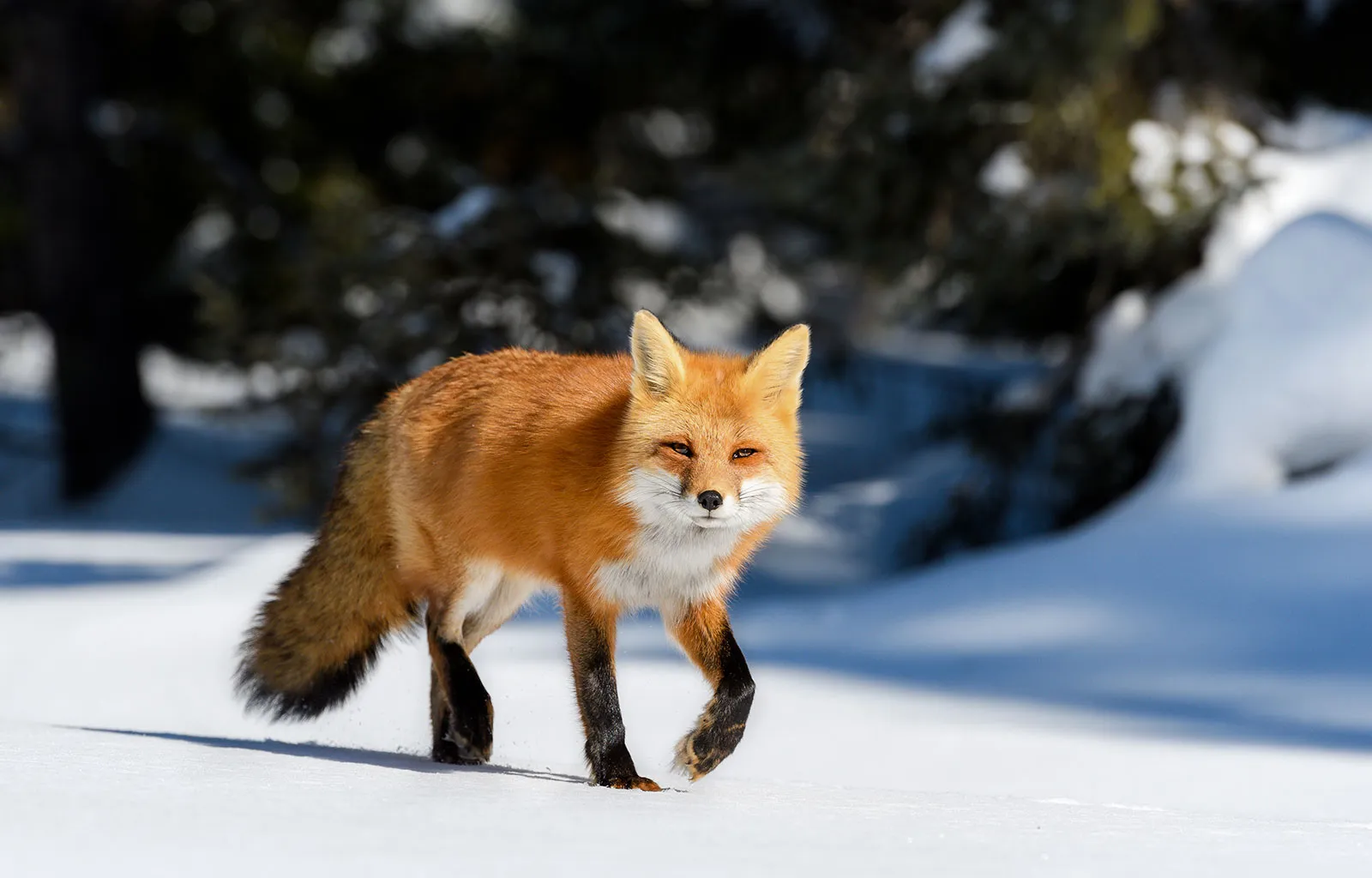
- The red fox, scientifically known as Vulpes vulpes, holds the distinction of being the most widely distributed land mammal across the globe. Its range surpasses that of the brown rat and the house mouse. From North America to Europe, from vast areas of Asia to parts of North Africa, the red fox has established its presence. Additionally, it has been introduced to Australia, where it is considered an invasive species.
Easily recognized by its vibrant reddish coat, white chest, and bushy tail, the red fox is a prominent member of the Vulpes genus, which includes various true fox species. Known for its adaptability, this fox has successfully thrived in diverse environments, ranging from suburban neighborhoods to rural landscapes. Its ability to coexist alongside human populations has contributed to its widespread distribution and survival.
Despite its ability to adapt and its wide-ranging presence, the red fox is currently listed as “Least Concern” in terms of conservation status. This suggests that its population remains stable and is not facing significant threats. However, it is essential to continue monitoring the interactions between red foxes and their habitats, particularly in regions where they have been introduced, to mitigate any potential negative impacts on local ecosystems.
Rüppell’s Fox

-
The diminutive Rüppell’s fox is a desert-dwelling species found in North Africa and the Middle East. It boasts a subtle sandy-colored coat and distinctive large ears, earning its name from the renowned German naturalist Eduard Rüppell. It bears a resemblance to the Fennec Fox, another African desert species, due to their similar appearances. Despite the challenges posed by the harsh desert environment, Rüppell’s fox is currently listed as “Least Concern” in terms of conservation status, indicating that its population is relatively stable and not facing significant threats
Sechuran Fox

-
The Sechuran Fox, belonging to the Lycalopex genus of “false foxes,” is the smallest member of this group. It inhabits the regions of Ecuador and Peru in South America, making its home in a variety of habitats including forests, meadows, and deserts. With its pale yellow-grey fur, this fox possesses a distinct appearance. However, its population faces threats due to habitat destruction, leading to its classification as “Near Threatened” by the IUCN. Despite its diminutive size, the Sechuran Fox is a resourceful nocturnal hunter, primarily feeding on insects and plants, showcasing its ability to adapt to its surroundings.
Short-Eared Dog

- The Short-Eared Dog, scientifically known as Atelocynus microtis, inhabits the vast expanse of the Amazon Rainforest, spanning across Colombia, Ecuador, Peru, Bolivia, and Brazil. Despite its wide distribution, this elusive canid is rarely encountered and remains shrouded in mystery. Unfortunately, like numerous species dwelling in the Amazon Rainforest, the Short-Eared Dog faces the threat of habitat destruction, leading to its classification as a Near-Threatened species.
Distinguishing features of the Short-Eared Dog include its short, black fur and diminutive rounded ears. It possesses somewhat webbed paws, adapting to its habitat and potentially aiding in traversing its forested environment. The species is known to lead a predominantly solitary lifestyle, adding to its enigmatic nature.
Side-Striped Jackal
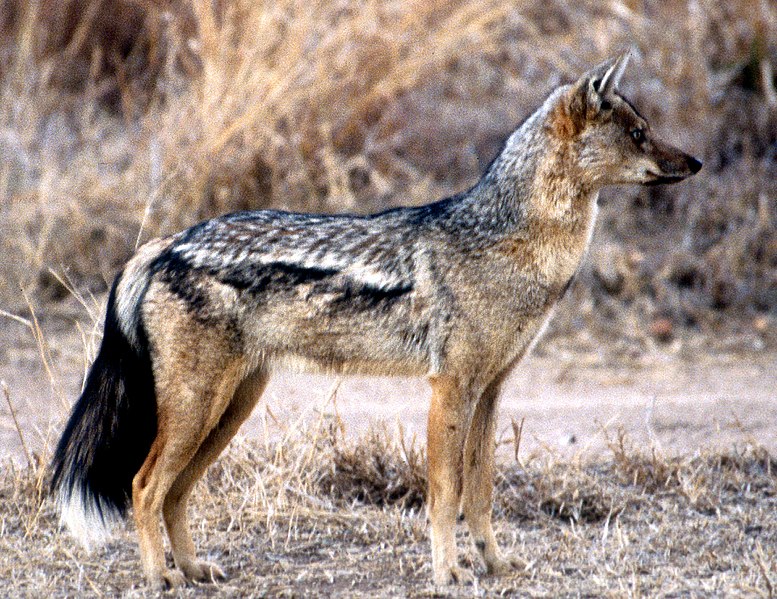
- The side-striped jackal, scientifically known as Lupulella adustus (formerly Canis adustus), is a medium-sized canid species that roams across a significant portion of Sub-Saharan Africa. Its distinctive name derives from the prominent stripe that adorns each side of its body.
Belonging to the Lupulella genus, the side-striped jackal shares close kinship with the black-backed jackal, another African canid. However, it is worth noting that the golden jackal, found in Europe and Asia, is not closely related to either of the African jackal species.
In comparison to its counterparts, the side-striped jackal displays a relatively less carnivorous dietary preference. Interestingly, during certain periods of the year, fruit consumption may make up a substantial portion, accounting for up to 30% of its overall diet. This adaptable feeding behavior sets it apart from its fellow jackal species.
South American Gray Fox

- The South American gray fox, scientifically known as Lycalopex griseus, is a prominent member of the Lycalopex genus, often referred to as the “zorro” or “false fox.” It is also recognized by other names such as the Patagonian fox, chilla, and gray zorro. This species can be found in the grasslands of Chile and Argentina in South America.
The South American gray fox possesses a distinct pale coat with rufous undertones, which has unfortunately made it a target for fur hunting. However, despite this threat, the population of this fox species remains stable, and it is currently classified as Least Concern in terms of conservation status.
It is worth noting that many authorities now consider the South American gray fox and the Pampas fox to be the same species, highlighting the ongoing scientific discussions and classifications within the fox family.
Swift Fox

- The swift fox, scientifically known as Vulpes velox, is a canid species that inhabits the grassy plains of the United States and parts of southern Canada.
Recognizable by its pale yellow and white fur, the swift fox is approximately the size of a domestic cat. It is characterized by its distinctive large ears with pointed tips. It shares a close relationship with the kit fox, another canid species native to North America.
During the early 20th century, the swift fox faced severe persecution and was eradicated from much of its original range. However, due to successful conservation and reintroduction efforts, the population of the swift fox has rebounded. Presently, the species is found in only 44% of its former range in the United States and 3% of its former range in Canada. Despite these challenges, the swift fox is no longer considered endangered and is currently classified as Least Concern in terms of conservation status.
Tibetan Sand Fox

- The Tibetan sand fox, scientifically known as Vulpes ferrilata, is a fox species found in the grasslands of the Tibetan Plateau and its surrounding regions in Asia. It has a distinctive reddish-grey fur coat and a bushy tail, characteristic of foxes belonging to the Vulpes genus.
This fox species primarily preys on the plateau pika, a small mammal inhabiting mountainous and alpine areas. The treeless grasslands of the Tibetan Plateau provide an ideal habitat for the Tibetan sand fox to thrive and hunt for its preferred prey.
Despite potential threats to its habitat and food sources, the Tibetan sand fox is currently classified as Least Concern in terms of conservation status.
Other Wild Dog Species / Subspecies
Cozumel Fox

- Scientific name: Undescribed Species Where found: Mexico Conservation status: Unassessed
Within the canid family, the Cozumel fox is a unique species found exclusively on the Mexican island of Cozumel. Unfortunately, there have been no confirmed sightings of this species since 2001, and its current status is unknown. Given the lack of information and assessment, it is possible that the Cozumel fox may be extinct, as there is no recent knowledge or evidence of its existence.
Dingo

- Scientific name: Canis familiaris / Canis familiaris dingo / Canis lupus dingo Where found: Australia Conservation status: Domestic / Unassessed
The Dingo is a wild dog species that roams the grasslands and deserts of Australia. It is the largest canid found on the continent and is known for its distinctive sandy-gold coat. The Dingo primarily feeds on small prey such as rabbits, kangaroos, rats, and birds.
The classification of the Dingo varies among experts, with some considering it a domestic dog, a domesticated dog subspecies, or a subspecies of the grey wolf. Its ancestors were domesticated dogs brought to Australia by humans around 4,000 years ago. However, due to interbreeding with feral domestic dogs, the number of pure Dingoes has declined.
Domestic Dog

- Scientific name: Canis familiaris / Canis lupus familiaris Where found: All continents except Antarctica Conservation status: Domestic
The domestic dog, also known as Canis familiaris or gray wolf (Canis lupus familiaris), has a widespread presence on all continents except Antarctica. Dogs have a long history of domestication, dating back at least 10,000 years and possibly as far as 40,000 years ago, originating from their ancestral gray wolves.
With a global population ranging from 700 million to 987 million, dogs have become one of the most populous species on Earth. They serve various roles, including working animals, companions, and feral individuals. Dogs are utilized for tasks such as herding livestock, providing security, assisting in hunting, and aiding people with disabilities.
It is worth noting that in certain countries, including Korea, China, and Vietnam, dog meat is consumed as part of the local cuisine, although this practice is not universally accepted.
Red Wolf

- Scientific name: Canis lupus rufus / Canis rufus Where found: USA Conservation status: Critically Endangered
The red wolf, a large canid, is primarily found in the southeastern United States. It falls in between the size and appearance of a coyote and a gray wolf, with a distinctive red-grey coat that gives it its name.
The red wolf is one of the most critically endangered wild dog species, facing a high risk of extinction.
In the 1980s, the red wolf was declared extinct in the wild in North Carolina. However, thanks to captive breeding programs initiated in the 1970s, efforts were made to reintroduce the species in North Carolina. Currently, the population of mature red wolves in the wild is estimated to be around 20 to 30 individuals.
The taxonomic classification of the red wolf remains a subject of debate and controversy. Some experts argue that it is a distinct species, while others consider it to be a subspecies of the gray wolf or even a hybrid between coyotes and gray wolves.
Wild Dog Species List: Conclusion
We express our gratitude for your interest in exploring the diverse world of wild canids.
